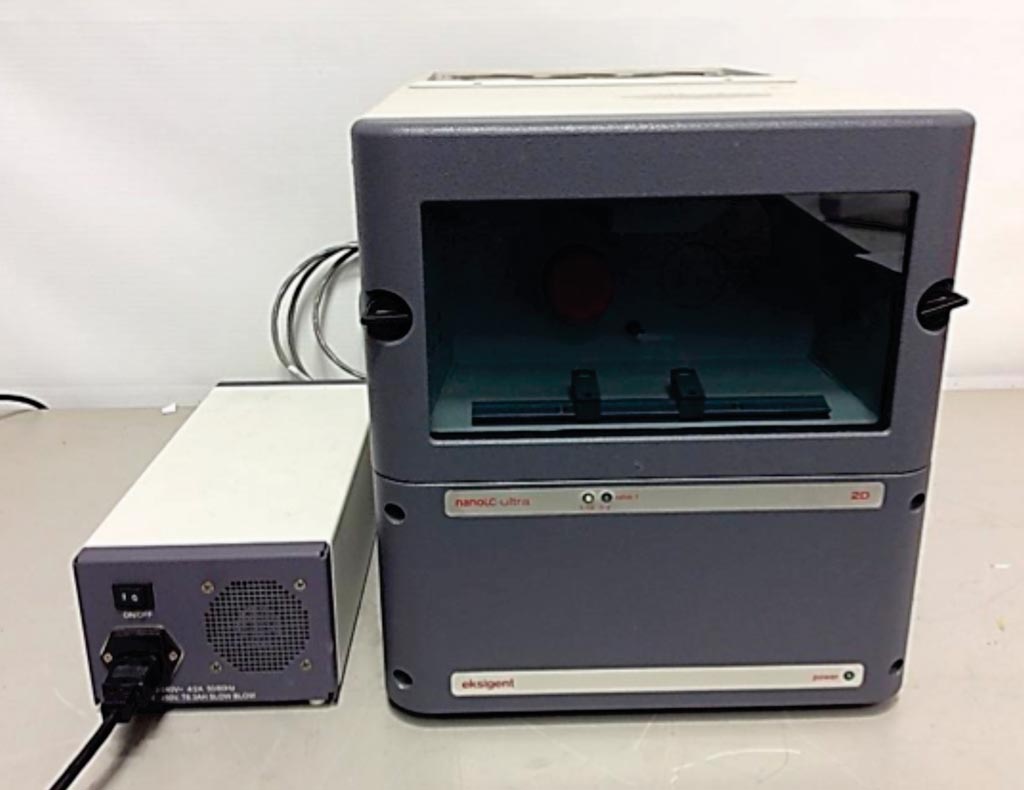Biomarkers Identified for Irritable Bowel Syndrome
By LabMedica International staff writers
Posted on 02 May 2018
The causes of gastrointestinal complaints in irritable bowel syndrome (IBS) remain poorly understood. Altered nerve function has emerged as an important pathogenic factor as IBS mucosal biopsy supernatants consistently activate enteric and sensory neurons.Posted on 02 May 2018
The enteric nervous system (ENS) in the gut wall coordinates and maintains normal gut functions. Its central role for normal motility, secretion and immune cell function also indicates that altered ENS function is often associated with gut pathologies. Irritable bowel syndrome (IBS) is a functional gastrointestinal disease and belongs with a population prevalence of ~11% to the most common gut disorders.

Image: The nanoLC-Ultra 1D+ for nanoflow liquid chromatography (Photo courtesy of Eksigent).
An international team of scientists led by those at the Technical University of Munich (Freising, Germany) studied the effect of supernatants from seven healthy controls (HC), 20 IBS and 12 ulcerative colitis (UC) patients on human and guinea pig submucous neurons were studied with neuroimaging techniques. They identified differentially expressed proteins with proteome analysis. Macroscopically normal intestinal specimens (as determined by visual inspection by a pathologist) were taken from 105 patients (51 male, 54 female, mean age 69 years) who underwent surgery for various pathologies.
Analysis of imaging studies was performed with Neuroplex 10.1.2. Nanoflow liquid chromatography tandem mass spectrometry (LC-MS/MS) was performed by coupling an Eksigent nanoLC-Ultra 1D+ to an Orbitrap Elite mass spectrometer.
The team found that for the nerve activating properties of IBS and UC supernatants were mainly due to proteases, which are not only enzymes but also important signaling molecules. However, there was an important difference. While the nerve activation from IBS supernatants was mediated by proteases signaling via the protease activated receptor type 1, this receptor played no role in the effect of UC supernatants. They found an IBS-specific protein pattern, in particular an IBS-specific protease profile. Proteome analysis revealed 204 differently expressed proteins in IBS supernatants and four proteases that were only enhanced in IBS supernatants.
The team addressed the translational relevance of the finding by asking the question how they could influence the nerve activation, besides using PAR1 blockers. They reported that using a protease inhibitor from a probiotic Bifidobacterium longum strain, this inhibitor blocked the nerve activation triggered by the IBS supernatant. The study was published on March 12, 2018, in the journal Public Library of Science ONE.
Related Links:
Technical University of Munich




 assay.jpg)









